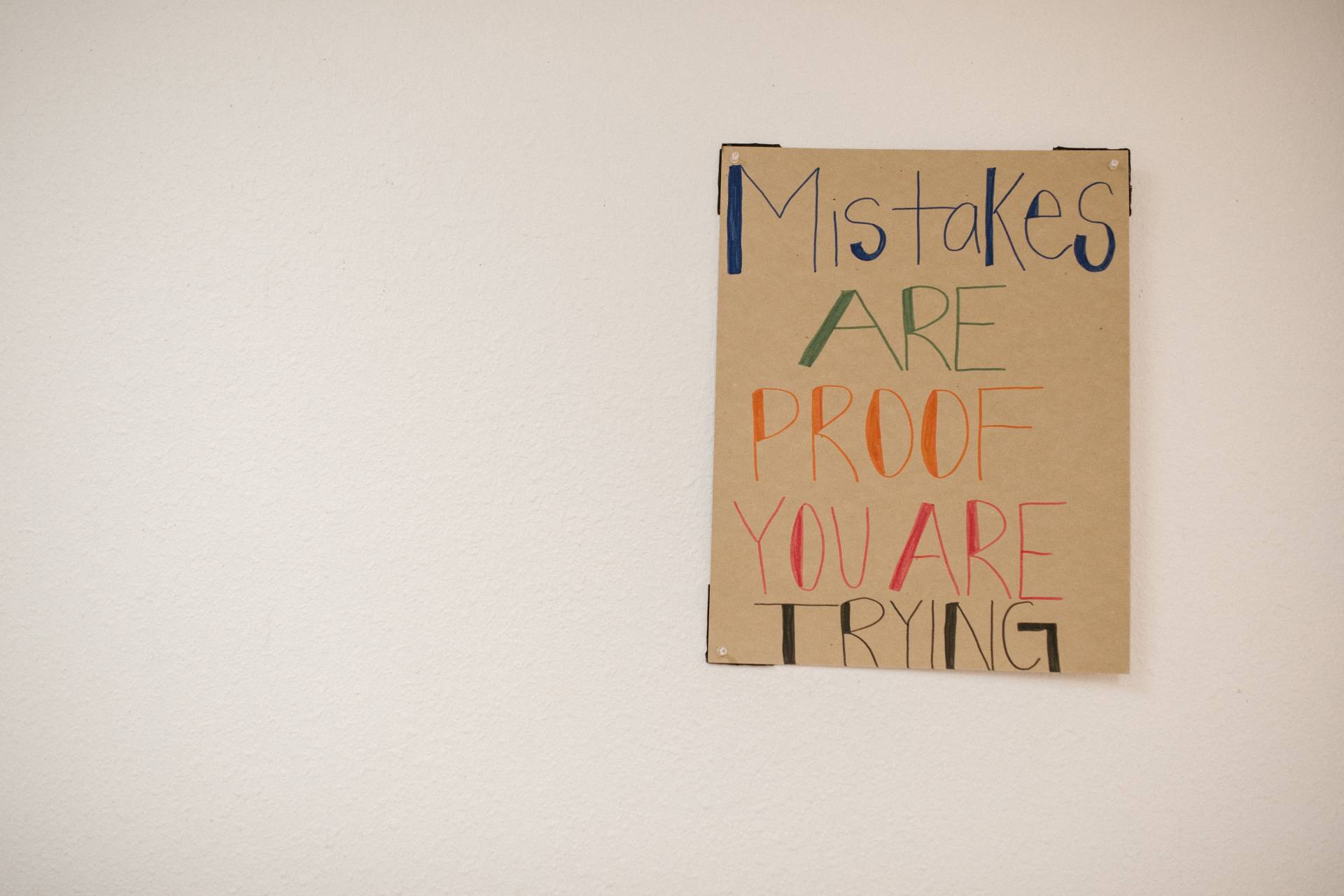

As you frantically race to meet the deadline for a project you thought would be completed weeks ago, you exclaim, “Not again!” How could you have predicted this? Furthermore, why do you consistently underestimate how long it takes you to accomplish your tasks?
You’re not alone. We have all experienced this experience, known as the planning fallacy. Additionally, social psychologists have explored this phenomenon since it was first described by Daniel Kahneman and Amos Tversky in 1979.
Basically, the planning fallacy is a phenomenon of prediction. In other words, people underestimate how long a task will take. Because of this, both individuals and organizations are at risk of failing to meet deadlines, incurring increased costs, and feeling frustrated.
The good news? It’s possible to beat it down.
The Planning Fallacy Explained
People who are too optimistic about how things will turn out underestimate the amount of time required to complete a project or task. The planning fallacy can occur for two reasons:
- Overestimating positive outcomes.
- Underestimating time, costs, or risks.
We often overestimate the probability of our future success despite knowing our past predictions were way too optimistic. In turn, we fail to anticipate the possible setbacks that are bound to occur. Consequently, we tend to repeat our mistakes when it comes to planning.
Individuals and groups alike can fall victim to the planning fallacy, regardless of how small or big the task is. Additionally, it is generalizable across cultures and personality traits. Although conscientious people tend to manage their time better than procrastinators, both tend to underestimate how long completing a task will take.
As with the actor-observer bias, actor-observer differences affect how people estimate time. More simply, people are generally more realistic and accurate when it comes to their tasks than they do. Their expectations, however, exceed their actual performance.
Understanding the Bias: Why We Miscalculate Time
What makes us fall prey to this seemingly illogical pattern? There are several factors that can contribute to this:
Cognitive biases.
- Optimism bias. The likelihood of positive events tends to be overestimated, while the likelihood of negative events tends to be underestimated. Due to this, we tend to downplay potential setbacks and delays, creating unrealistic timelines.
- Overconfidence. When it comes to estimating time and effort, we often believe we are more proficient than we are. As a result, we underestimate the complexity of tasks and ignore the outcome of previous projects that took longer than expected.
- Focusing on the “inside view.” In planning, we often ignore external factors like past experiences, industry norms, and historical data, focusing instead on the details of the current project. By ignoring valuable information, potential problems are overlooked.
- Availability bias. As a result of recent or similar positive examples, we believe success is more likely than we previously believed. In turn, this leads to an unrealistic expectation of smooth sailing.
- Self-serving bias. When we consider our past failures, we blame external circumstances more than personal factors for our shortcomings. When we recall our successes, we tend to see ourselves as solely responsible for them. Consequently, we tend to focus on our successes and downplay or ignore our failures when estimating the time it will take to complete future tasks.
External factors.
- Lack of information. A lack of accurate data or underestimating the task’s complexity can lead to inaccurate time estimates.
- Unforeseen circumstances. Despite our tendency to focus on the best-case scenario, unexpected events can derail even the best-laid plans.
- Insufficient feedback. The absence of clear feedback loops may prevent individuals and teams from learning from past planning mistakes and lead them to underestimate future requirements.
- Social pressure. Our desire to appear competent, deadlines, and stakeholder expectations can force us to underestimate timeframes to gain approval or avoid disappointment.
Combined, these biases can lead to significant underestimates.
Many empirical studies have confirmed the planning fallacy since Kahneman and Tversky published their seminal study. According to a study conducted among psychology students, only 30% completed their senior thesis within the time they expected.
In addition, the planning fallacy is extremely hard to overcome. Despite our best efforts, we fail to learn from our mistakes. While we recognize that we have over-optimistic predictions in the past, we often persist that they are realistic now.
The Fallout: Consequences of Underestimating Time
There is more to the planning fallacy than a harmless mental quirk. There can be significant consequences as a result:
- Missed deadlines. Underestimating time can result in rushed work, an increase in errors, and missed deadlines In some cases, this can lead to penalties as well.
- Project failure. Overruns, budget deficits, and even project failure can result from underestimating resources and effort.
- Stress and burnout. Tasks that take longer than expected can result in stress, anxiety, and burnout, affecting both personal and professional health.
- Reduced productivity. When you constantly chase deadlines and feel overwhelmed, you can hinder your productivity and performance.
- Relationship strain. Relationships with colleagues, friends, and family can be strained when promises and commitments are not fulfilled due to underestimation.
- Ineffective planning. Continually underestimating time leads to unrealistic expectations and disappointment in the future.
- Unfulfilled goals. As a result of underestimating the time and effort required, personal goals become elusive, causing frustration and a sense of failure.
Combating the Planning Fallacy
So how can we become masters of our schedules by freeing ourselves from this mental trap? Listed below are some practical strategies:
Awareness.
- Educate yourself. The first step towards overcoming bias is understanding it and its effects. Reading articles, watching videos, or taking courses on the topic are some suggestions.
- Reflect on past projects. Evaluate past projects in which you fell victim to the fallacy. Identify the mistakes you made and how you could have been more realistic.
Planning strategies.
- Chunk it down. Make large projects more manageable by dividing them into smaller tasks. By doing so, they become less intimidating, and more accurate time estimates are possible.
- Take the “outside view.” Consider how similar projects have performed in the past instead of becoming absorbed in the details of the project at hand. You can make a more realistic plan by using data from comparable projects. You can, for instance, adjust your estimates based on patterns of delays and challenges.
- Consult benchmarks. Become familiar with industry standards or benchmarks if you haven’t been involved in similar projects before.
- Change the view from the inside. Research has developed interventions that encourage people to think ‘outside the box’ when making predictions for the task at hand. A few strategies include breaking the plan into smaller steps (unpacking), visualizing the plan in the third person (third-person imagery), and generating it in reverse-chronological order (backward planning). You can use any of these strategies to help you think about little things that might delay your progress.
- Pad your estimates. In case of unforeseen delays, interruptions, or mistakes, add a buffer time to the schedule. As a general rule of thumb, double your original estimate.
- Utilize the Pomodoro Technique. Using this technique, you work in short, focused bursts of 20/30/40 minutes. You then take a short break to recharge and start over. To perform the technique, you will need a timer. By doing so, you will be able to break down a large, complex task into manageable chunks. As soon as you begin a task, you aim to complete it before focusing on urgent but unimportant tasks.
- Seek external feedback. Identify potential pitfalls and share your plan with a trusted colleague, friend, or mentor.
Mindset shifts.
- Be a pessimist. According to Murphy’s Law, whatever can go wrong, will go wrong. Despite its apparent negative connotations, it is quite useful when you need to get things done. After all, inevitably, your projects won’t meet your expectations, no matter how well you intend them to. However, if we approach planning from a “negative”, or risk management perspective, we will be able to curb our enthusiasm. You should therefore consider what could go wrong and brainstorm ways to fix it.
- Focus on progress, not perfection. Strive for realistic goals, not unrealistic ones. Recognize progress and celebrate your small wins.
- Don’t let the urgency rule you. We are prone to putting important tasks aside and focusing on urgent ones. The reason? This provides us with a rapid sense of accomplishment. The trick to escaping this vicious cycle is to understand the difference between urgent tasks and important ones. A phone call or meeting, for instance, requires your immediate attention. However, unlike important tasks, these tasks don’t contribute to long-term goals.
- Identify potential obstacles. Prepare for potential setbacks, such as technical difficulties, resource limitations, or communication problems.
- Practice mindfulness. Using mindfulness techniques like meditation can prevent you from getting lost in unrealistic optimism by keeping you focused and present.
Additional tips.
- Use time-tracking tools. You can monitor how long tasks actually take by using a time-tracking tool. Having this information can help you make better estimates in the future.
- Set realistic deadlines. Set realistic deadlines that don’t put you under pressure..
- Reward yourself. In order to stay motivated and avoid burnout, celebrate milestones and complete tasks.
It is important to remember that combating the Planning Fallacy is an ongoing process. However, when you implement these strategies and remain aware of the bias, you can make more realistic plans, increase your productivity, and achieve your goals with greater success
FAQs
What is the planning fallacy?
Basically, the planning fallacy describes our tendency to overestimate the benefits and underestimate the time and costs associated with completing future tasks. As a result, overly optimistic plans get missed, causing stress and reducing efficiency.
What are some examples of the planning fallacy?
- Despite previous projects taking much longer, a student believes that they can finish a research paper in one night.
- A company that launches a new product without considering possible delays.
- Those who plan vacations without allowing for unforeseen travel disruptions or expenses.
One infamous real-life example was the Sydney Opera House, whose construction crews encountered unforeseen problems from the first day in 1959. Their discovery, for instance, was that the land was composed of loose alluvial deposits rather than sturdy sandstone, as previously thought. Additionally, the roof’s weight changed as it was constructed from blueprints to reality.
Despite the original estimate for the whole project, the first stage of construction wasn’t completed until 1963. After nearly a decade and millions of dollars over budget, it was finally opened on October 20, 1973.
Why does the planning fallacy occur?
The planning fallacy can be attributed to many reasons.
A major reason is that when planning for the future, we tend to focus on the best-case scenario instead of considering potential obstacles and challenges.
Furthermore, we often underestimate the time it will take to complete tasks because we overestimate our own abilities.
Is the planning fallacy the same as procrastination?
Procrastination and the planning fallacy are completely different phenomena. Even though they both concern time management and task management, they describe different challenges in different ways:
- Planning fallacies have to do with our inability to accurately estimate the length of a future task due to optimism bias and over-reliance on best-case scenarios.
- Procrastination, however, is postponing a task by focusing on less urgent or more pleasant activities. The reason for this is psychological, such as a fear of failure.
In other words, the planning fallacy refers to inaccurate estimates of how long a task will take to complete, whereas procrastination refers to a deliberate delay caused by psychological factors.
Does the Planning Fallacy apply to everyone?
There is no way to be free of the planning fallacy. This is an inherent characteristic of human cognition that affects people of all ages and backgrounds. Several strategies, however, can help manage the planning fallacy
Image Credit: Ketut Subiyanto; Pexels











John Rampton
John’s goal in life is to make people’s lives much more productive. Upping productivity allows us to spend more time doing the things we enjoy most. John was recently recognized by Entrepreneur Magazine as being one of the top marketers in the World. John is co-founder and CEO of Calendar.